Climate change is here and it’s changing the world as we know it. Its effects can be seen everywhere across the globe. Severe droughts, flooding, intense storms – everywhere you turn, the news is talking about extreme weather patterns that wreak havoc on the environment, economy, and society. Climate change is a part of the human experience and will be for years to come. The time to reduce carbon emissions is now. Use this guide to find out how solar and renewable energy can reduce a person’s carbon footprint. Explore why climate change is happening and why it’s important to take action now.
Which Path to Energy Do You Want?


Breaking Down the Differences



Coal is mined by two methods depending on where the deposit sits: opencast (surface) or deep (underground). Oil and natural gas are extracted by drilling wells into underground reservoirs. To get as much fuel out of the ground as possible steam, gasses, or chemicals are injected to oil flow more freely.

Sourcing solar energy is relatively simple. With enough space, solar panels can be erected just about anywhere – on a parcel of land, carports, rooftops, the wings of a plane, cars and with advances in technology, they will even replace windowpanes. Where there is sunlight and space, solar energy is accessible.
Most of our energy comes from burning fossil fuels, a process that emits carbon dioxide, a greenhouse gas (GHG). GHGs trap and add extra heat to the global system in ways that is changing the climate. Dr. Dettinger notes that once CO2 reaches the atmosphere, it stays there for thousands of years. The decisions people make today will have ramifications well into the future.
Solar panels do not release any emissions as they generate electricity. However, emissions are released during the manufacturing, materials transportation, installation, maintenance, decommissioning and dismantling of the solar energy systems. Nevertheless, the amount of these associated emissions pale in comparison to emissions created by natural gas, oil, and coal.

The U.S. Geological Survey estimates that on a national level, 41 percent of all freshwater withdrawals in 2015 were for thermoelectric power operations, primarily for cooling needs. According to the NREL, depending on the various types of cooling systems used by thermoelectric coal, natural gas, or oil power plants, cooling can require different amounts of water, ranging anywhere from 150 to 50,000 gallons of water during a plant’s operational phase.
PV panels do not require the use of water to generate electricity. However, when calculating the amount of water used to clean solar panels, the number comes out to 2/3 cup of water per megawatt-hour. According to a report from the National Renewable Energy Laboratory (NREL), utility-scale PV entails between one and five gallons consumed per MWh.
Fossil fuel prices tend to fluctuate, sometimes wildly. In 2004, the price for gasoline was approximately $1.50. In 2008, that number jumped to over $4; 11 years later that number is down to $2.57. It’s difficult to predict how much consumers will be paying at the gas pump with numerous factors driving increases in cost.
According to the Solar Energy Industries Association, the cost to install solar has dropped by more than 70 percent over the past 10 years. Currently, the cost per watt to install solar is around $3. In addition, solar panel users can often lock-in electricity prices and once panels are paid for, it’s almost free to use.
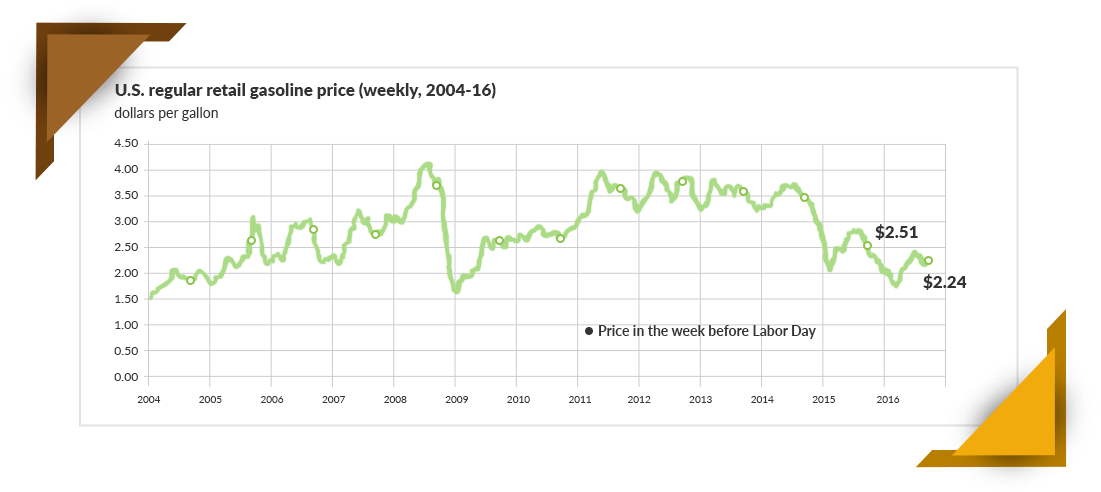
According to the U.S. Energy Information Administration, current global oil supplies will only last until 2050. Experts from BP claim it will be more like 53.3 years. Either way, fossil fuels like oil will run out and nations will need to find alternative sources of energy.
Thanks to its availability, battles over who controls or owns renewable resources (like sun and wind) are, at least for now, less likely – unlike with fossil fuels. In fact, having a neighborhood powered by community solar array is not only possible, it’s happening right now with community solar gardens popping up across the country.
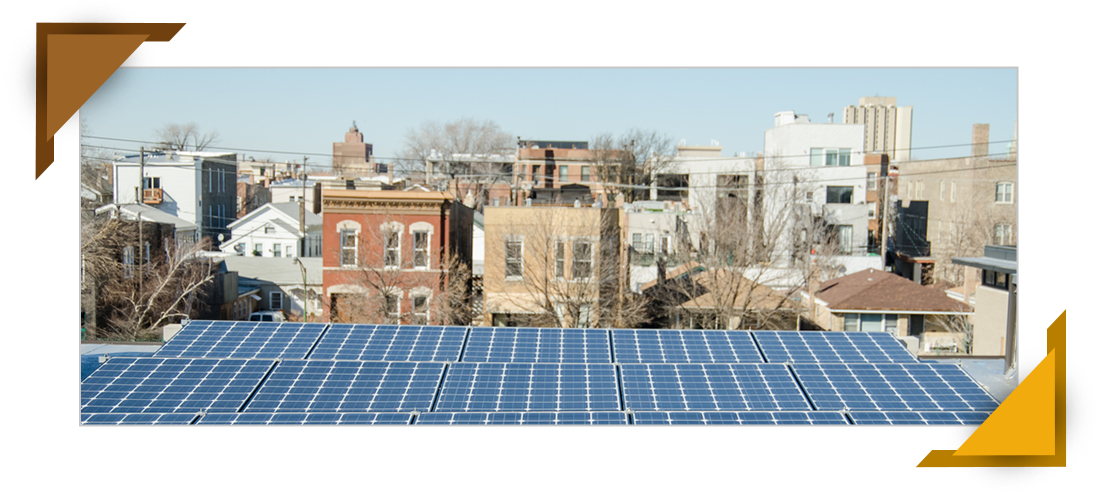
The U.S. Energy Information Administration estimates the U.S. has enough natural gas to last 80 years while oil is estimated to last 30 years. The World Coal Association gives coal 150 years at current production rates. These numbers may fluctuate as nations find new sources of fossil fuels.

Solar and other forms of renewable energy will be around for billions of years until the Earth faces its demise.

New sources of fossil fuels are becoming harder to find. Innovative extraction methods including thermal, gas and chemical note that these methods lead to serious environmental threats. In addition, these methods, while more enhanced and effective are also more expensive.
As technology improves in the renewable energy sector, efficiency rates increase and the cost per watt for installation will fall.
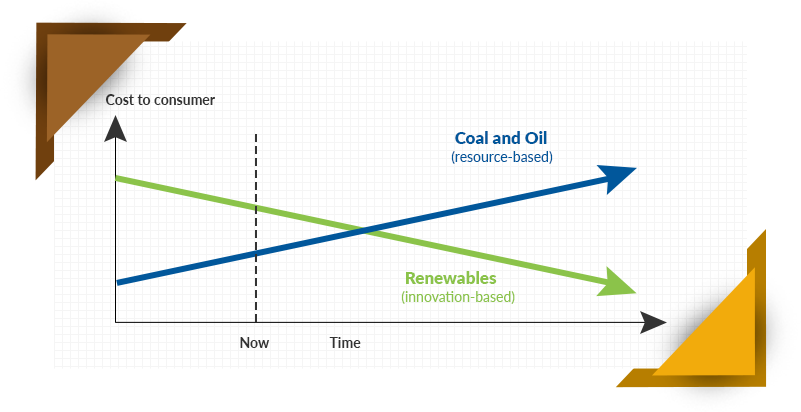
According to a report from the DOE, electricity disruptions cost the economy about $80 billion annually and endanger public safety and health. Increasing the impact of power outages is the growing interdependence of the electricity infrastructure with communications and information technology, fuels, water, and transportation. Weather is the primary cause for these disruptions.
According to the National Research Council, one way to prevent the continued increase in power outages seen over the past decade is to develop a stronger distributed generation network. Currently, the aging electric grid is straining under increased demand without similar growth in transmission capacity.

Electricity generated by fossil fuel power plants is available day and night, whether the sun is shining or the wind is blowing. While it is a reliable and constant source of energy, an aging and increasingly strained distribution network paired with more volatile weather patterns, is leading to more power outages.
The sun is not always shining. Storms, nighttime, shade from trees or buildings, mean solar panels are not generating electricity 24/7. However, advances in battery technology like the Tesla Powerwall are making battery-backed solar systems more of a reality. With systems like these, solar energy will be accessible whether the sun is shining or not.
In 2014 and 2015, 303 people died from working in the mining, quarrying, and oil and gas extraction industry. There are also many health hazards caused by fossil fuels – contaminated water, land and air can lead to respiratory problems, cardiovascular issues and even cancer. Massive oil spills and natural gas leaks can also wreak havoc on the environment.
Risks posed by solar mostly include threats to biodiversity. Birds and insects may confuse the shining dark surfaces of a solar panel with water surfaces. Insects may end up laying their eggs on the panels, while birds end up hurt or dead as they crash into panels.

According to the EIA, in 2018, Canada, Saudi Arabia, Venezuela, Mexico, and Iraq were the top five source countries for U.S. petroleum. Overall, the U.S. gets its petroleum from about 90 countries. This makes the U.S. reliant on other countries for much of its energy source.
The U.S. could generate much of its own electricity. According to NREL it would take about 0.6 percent of America’s total land area to supply all of the United States’ electricity needs. As technology continues to improve and efficiency rates increase, this amount of land will continue to decrease.
Fossil fuel power plants emit pollution into the air and water. These emissions harm community health, especially in the disadvantaged neighborhoods that are near power plants.
Solar and other forms of renewable energy generate electricity without polluting the environment. Thanks to the lack of harmful emissions, there are minimal impacts on public health and safety.

Coal is the third largest primary energy source in the U.S.; it’s also the dirtiest energy source. In 2018, coal was responsible for 24 percent of total U.S. greenhouse gas emissions. In a 2019 Gallup poll, only 22 percent of respondents said that the U.S. should place more emphasis on coal development with 50 percent saying there should be less emphasis.
Solar and other forms of renewable energy boast a very positive public opinion. In that same Gallup Poll, 80 percent of respondents said that the U.S. should put more emphasis on solar development. In the wake of increasing concern over climate change, clean, renewable energy is seen as the wave of the future.
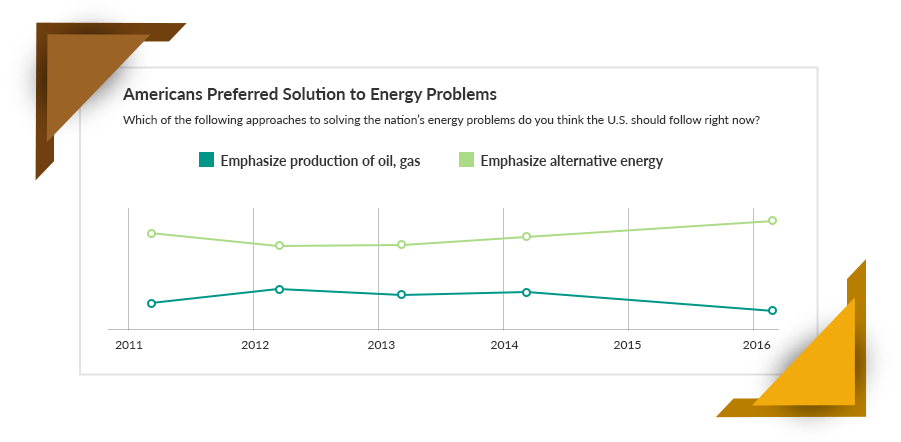
Beyond ROI: Why Solar Might Just Be the Moral Energy Choice
Twenty-nine states across the U.S. have adopted renewable portfolio standards (RPS), mandating increased use of energy from renewable energy sources. Many RPSs include a solar carve out. As you might expect, the reason for this movement toward renewable energy is not to save or make money but is rather a direct commitment to saving and protecting our planet. As climate change expert Michael Dettinger states, there is overwhelming and unrefuted scientific evidence that human use of fossil fuels is causing global warming.
The Greenhouse Effect
Sunlight comes down to the Earth. Some of the light becomes heat, some is reflected away.

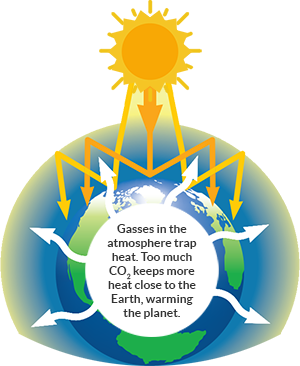
Dettinger explains that currently most of the energy we use comes from burning fossil fuels. The primary gas released into the air from burning fossil fuels is carbon dioxide (CO2). As a greenhouse gas, once CO2 is in the atmosphere, it holds warm air near the surface and adds extra heat to the global system. This extra heat changes all facets of the world’s weather systems – from hurricanes to floods, a warmer world means more extreme, impactful weather.
Once in the atmosphere, Dettinger said, CO2 stays in the atmosphere for over a thousand years. As such, global warming is not something we can stop tomorrow, and decisions made today about energy usage will have long-lasting impacts thousands of years into the future. Due to this cumulative effect, even if we plan several generations ahead, the CO2 will still be in the atmosphere, making our planet warmer. Society simply can’t afford to make changes around fossil fuel consumption at a later date. The problem requires earnest, long-term responses.
As an expert working in the field of climate change for more than 20 years, Dettinger is most alarmed by the rate of climate change that is occurring. He notes that a few decades ago, climate scientists would project how the climate would look in a hundred years. However, almost every step of climate science since the late 80s has made scientists realize again and again that the climate is changing more quickly than expected. For example, sea ice is much more fragile than once thought and instead of taking 150 years to break down, scientists are seeing it break down now.

Credit: NOAA
Dettinger notes that the sooner people can change to non-fossil fuel energy sources, the less CO2 will ultimately be in the atmosphere. The need to reduce GHGs is critical to life on earth. While scientists like Dettinger cannot connect specific weather events to global warming, they predict that globally, storms will tend to intensify in magnitude, while a growing portion of Earth’s land mass will be forced to contend with increasingly severe droughts. In short, society’s dependence on fossil fuels has led to a much harsher climate.
And while solar energy is not the only solution to this complex problem, it is an effective way to help reduce carbon emissions. According to the Solar Energy Industries Association (SEIA), one gigawatt-hour of solar generation can prevent the creation of 690 metric tons of CO2.
As it currently stands, solar capacity installed in the U.S. alone can be expected to offset nearly 81 million metric tons of CO2 annually.
When considering the future of the planet both for future generations to enjoy as well as the ability to sustain continued economic growth, renewable energy sources emerge as a logical response based not on short-term gain, but on principles that are both morally and economically sound.
How Energy Consumption Choice Impacts Climate Change
When everyone joins forces to make lifestyle changes and environmentally conscious choices, humanity can become part of the solution instead of the source of the problem. Everyday energy choices impact climate change and while it’s hard for many to believe that flipping a light switch off or walking to work or school can make any difference, these actions do help curb carbon emissions.

Source: NOAA
According to the EIA, in 2018, the U.S. generated about 4 trillion kilowatt-hours of electricity. About 644 percent of that electricity was generated by fossil fuels such as coal, natural gas, and petroleum. That same year, the U.S. also emitted nearly 5.27 billion metric tons of carbon dioxide into the atmosphere. While these levels seem high, they are actually 12 percent lower than in 2005. One of the largest sources of this change has come from the residential sector. As people use more energy to heat and cool their homes due to extreme weather, the impact on emissions is clear. Another significant source of change was transportation. As the economy grows stronger, people travel more, and simply burn more gasoline, emissions increase. Personal choices can make a difference.
If using electricity generated by fossil fuels, just one kilowatt-hour of electricity can produce 1.76 to 2.07 pounds of CO2, according to the EIA.
One kWh is enough to:
- Watch television for 10 hours
- Vacuum for an hour
- Work on the computer for five to 10 hours
- Cook breakfast for a family of four
These actions, while seemingly insignificant, can add up in big ways. In 2018, the average U.S. household was using 914 kWh per month, that’s 10,972 kilowatt-hours per year.
Making choices to conserve energy can make a big difference.
Another way individuals can avoid carbon emissions is to use clean, renewable solar energy. A comprehensive study conducted by NREL determined the total amount of greenhouse gases emitted over an energy source’s lifetime noted that: “While coal-powered technology used up 1050 g of carbon dioxide per kWh of electricity over its lifetime (a median estimate measured in CO2 eq/kwH), solar PV consumed 55 g CO2 eq/kWh.” The NREL researchers noted that for solar, as technology improves, its carbon footprint will see a downward trend.
Data from the International Atomic Energy Agency reveals that natural gas contributes more than 7 times the amount of CO2 emissions relative to solar energy. Coal contributes more than ” target=”_blank”>seven times the amount of CO2 emissions compared to solar.

Statistics and data provided by the International Atomic Energy Agency (IAEA)
Emissions in Your State: The Case for Solar
Where your household’s energy comes from makes a big difference in how environmentally impactful a switch to solar can be. Across the U.S., the two biggest sources of electricity come from coal at 27.5 percent and natural gas at another 35.2 percent. However, not all states are equal when it comes to energy consumption and carbon emissions. In fact, CO2 emissions per person can vary wildly by state. For example, Wyoming produces nearly 104 metric tons of CO2 per person, while New York doesn’t even reach 10 metric tons.
These variations are due to a number of factors:
- Weather
- Population density
- Fuel source
In Wyoming for example, the winter is cold with average low temperatures in January between 5 to 10 degrees Fahrenheit. Heating a home consumes a lot of energy, driving up emissions compared to other states. Wyoming also has one of the lowest population densities in the country. New York on the other hand, with the lowest per capita CO2 emissions in the country, has a high population density and a strong mass transit system. Most of its residences are multi-family units that offer more efficient heating and cooling systems, and with the ninth-highest electricity price in the U.S., people are motivated to save energy.
Another noticeable factor that affects carbon emissions is how the electricity is generated. The states that boast lower carbon emissions tend to be those generating non-carbon, cleaner electricity like hydropower or solar. States like Wyoming on the other hand use coal as the principal emissions source.
As federal and state governments push to clean up their emissions act, solar energy is an attractive and realistic solution for many parts of the country that have a higher need to reduce their CO2 emissions. Check out your state and see if your solar could do some extra carbon-offset good:

U.S. Clean Energy Rule
We can figure this stuff out as long as we’re not lazy about it; as long as we don’t take the path of least resistance. … Right now, we’re inventing whole new technologies, whole new industries – not looking backward; we’re looking forward. And if we don’t do it, nobody will.”
In June of 2019, the Environmental Protection Agency finalized the Affordable Clean Energy (ACE) Rule. The rule repeals and replaces the Obama administration’s Clean Power Plan which was never put into effect due to Supreme Court Intervention. ACE is an emission guideline that uses heat rate improvement (HRI) as the Best System of Emission Reduction (BSER) for CO2 from a coal-fired electric generating unit (EGU). The emission guidelines are focused solely on designated facilities defined as coal-fired EGUs with a capacity greater than 25 MW-net and commenced construction on or before January 8, 2014. There are approximately 600 EGUs at 300 facilities that could be covered by this rule. States are then required to develop and submit their plans to regulate emissions in accordance with ACE guidelines for EPA review and approval.
Total Emission Reductions Percentage by 2030
(from 2012 levels)

Carbon emissions and other greenhouse gases not only impact the environment, they affect public health and safety as well. The EPA notes that the Plan will prevent 2,700 to 6,600 premature deaths and 140,000 to 150,000 asthma attacks in children.
The DOE notes that the U.S. emits 16 percent of global CO2 emissions, making it second in the world only to China, which contributes 28 percent of carbon dioxide emissions. Per capita, the U.S. releases 17 metric tons of CO2 emissions each year. Typical electricity emissions are 14,920 pounds per household annually. As a world leader in carbon dioxide emissions, the U.S. is striving to make positive changes through policies and standards enacted through efforts like the Clean Power Plan.
However, the U.S. is not the only contributor to greenhouse gas emissions. In fact, 10 other countries produce more carbon emissions per capita than the U.S. with Qatar generating an average of 44 metric tons of CO2 per person. A problem that faces the entire planet requires united global action.



